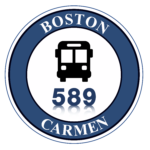Cutting Transit Service Doesn’t Save as Much Money as You Think
December 9, 2015
Frontier Group | By Tony Dutzik | 12/07/2015
 Cuts to transit service are among the many options being considered by Gov. Charlie Baker’s Fiscal and Management Control Board as it attempts to restore the MBTA to fiscal and operational health. Late-night service, weekend commuter rail service, and service on up to 28 regular bus lines are all under the budgetary microscope.
Cuts to transit service are among the many options being considered by Gov. Charlie Baker’s Fiscal and Management Control Board as it attempts to restore the MBTA to fiscal and operational health. Late-night service, weekend commuter rail service, and service on up to 28 regular bus lines are all under the budgetary microscope.
The administration argues that these services are expensive to provide for the number of riders they serve. But cutting transit service isn’t likely to be much of a solution to the T’s woes. And in some ways, service cuts could even make the agency’s situation worse in the long run.
To understand why, think about the costs of owning your home. Some of the costs are fixed, and you incur them whether you are using the house or not (insurance, property taxes). Other costs vary depending on how much you use the house – electricity and heat, for example.
The same is true of the T and any transit agency. According to this 2013 presentation on the T’s cost structure, only 11% of the costs of the T’s heavy rail subway system vary depending on the level of service provided, compared with 59% of the costs of bus service.
In communicating to the public about the cost of the these services, the Baker administration has tended to focus on the total cost – which includes a share of the system’s fixed costs, spread across all riders – as opposed to the marginal cost of running an additional bus or train. This Nov. 18 story on Boston.com is a good example:
[MBTA Chief Administrator Brian] Shortsleeve said weekend commuter rail service—which costs the T $23.52 per rider, compared to $4.52 on weekdays—could be subject to price adjustments, replacement with a lower-cost service like buses, or outright elimination.
The implication, intended or not, is that cutting weekend commuter rail service would save the T $23.52 per rider. But it won’t. According to this recent presentation to the Fiscal and Management Control Board, only about 35 percent of the cost of providing weekend commuter rail service is in the form of variable (or marginal) costs. Of the $51 million that the T reckons it costs to provide weekend commuter rail service, only $18 million would be saved by eliminating it.
The same is true, though to a lesser degree, for late-night bus and subway service and the regular bus routes targeted for service changes, cutbacks or elimination.
If you are truly looking to solve the MBTA’s serious financial problems, therefore, marginal cuts to transit service simply aren’t going to get you very far, while potentially inflicting a lot of pain and reducing the perceived value of the MBTA to riders. Keep in mind that these services collectively provide 8 million trips per year[1] – more than are served by the entire transit systems of some mid-sized American cities. These are trips that would either have to be taken via some other means of travel, or not taken at all.
Service cuts could also set off a downward spiral. If weekend commuter rail service is cut, the $33 million in fixed costs currently attributed to that service won’t just go away. Rather, it will be spread across a smaller ridership base. For commuter rail, spreading the fixed costs currently attributed to weekend riders to the remaining weekday riders would boost the perceived “subsidy” to those riders by about a dollar a trip. It won’t take long for those inflated “subsidy” figures to be used as an argument for more service cuts, and so on.
At the same time, cutting seemingly marginal services can have broader implications for ridership and revenue. Some MBTA riders who use these services may decide to give up on the T altogether and use the money they currently spend on monthly passes for other things – like a car. Moreover, as Ari Ofsevit* has argued, those who use late-night service to get home from somewhere likely used the T to get where they were going in the first place, meaning that cutting late-night service could be expected to cut into evening ridership and revenue as well.
Lastly, when considering alternative ways of providing a service – such as substituting buses for commuter rail on weekends – it is the marginal cost that matters. The question is: Can the T provide bus service that is just as attractive to weekend commuter rail riders at a net cost of less than about $8.30 per ride? Given the experience with the MBTA’s suburban express buses, many of which also incur a high net cost per rider, it seems doubtful. Nothing would be less productive than providing a lower-quality bus service to suburban riders while perfectly good commuter rail infrastructure sits idle – and losing money doing it.
The Baker administration faces some tough decisions about the future of the T – decisions with profound implications for all MBTA riders and the region as a whole. Rethinking longstanding ways of providing transit service so as to deliver the same or better service at lower cost is a critical and necessary part of reform. But at a time when demand for transit in Boston is booming, we need to focus on approaches that are more likely to set off a “virtuous cycle” of rising ridership and revenue for the T, not a downward spiral.
A “cuts-first” approach won’t cut it.
* Correction: Andy Monat (@mbtainfo) and Andrew Collier also contributed to this analysis of the connection between evening and late-night ridership. A treasure trove of data on late-night MBTA and taxi usage produced by this team can be found here. We regret the oversight.
[1] Based on 4,700,000 annual riders on 28 bus routes identified by the T as “high-deficit”; 40,000/weekend average ridership on weekend commuter rail service, times 52 weeks=2,080,000 riders, and 13,000/night average ridership on late-night service, times 104 weekend days=1,352,000 riders, from MBTA.
– See more at: http://www.frontiergroup.org/blogs/blog/fg/cutting-transit-service-doesnt-save-much-money-you-think#sthash.GlGvnfqy.dpuf


Recent Comments